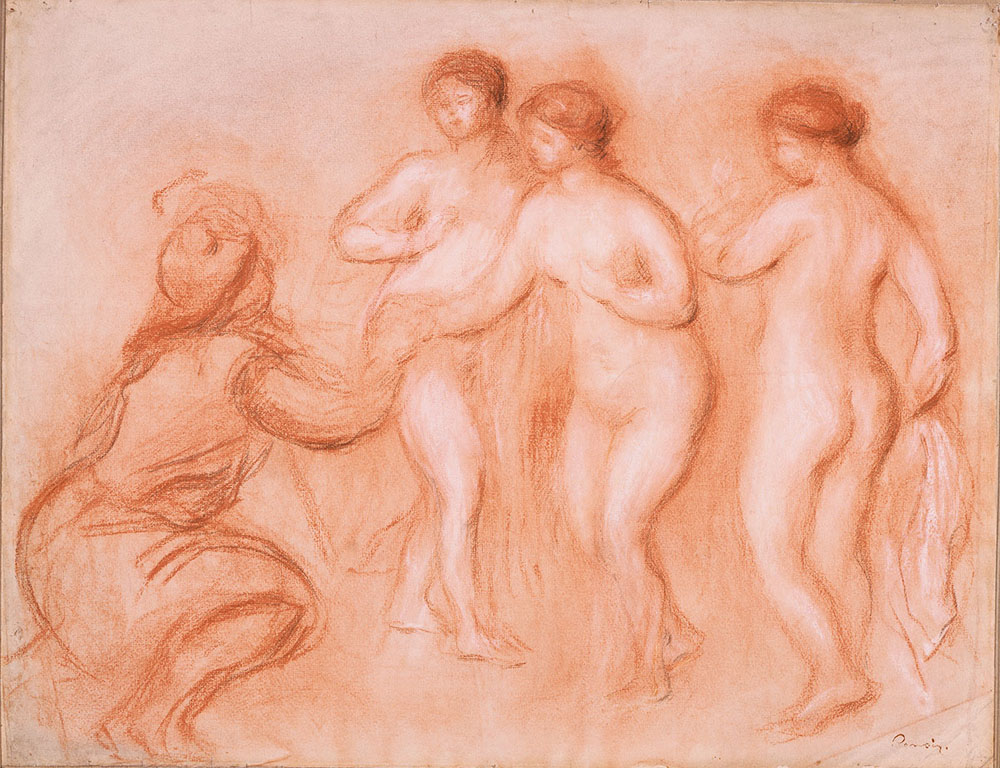Listen to co-curator Sarah Lees discuss Renoir’s treatment of the story of the Judgment of Paris in different media.

Several ancient authors told the story of Paris, son of King Priam of Troy, who was instructed by Mercury to bestow a golden apple on the most beautiful goddess. After requesting that Venus, Juno, and Minerva disrobe so that he can judge them, he ultimately chooses Venus, the goddess of love.
Between 1908 and 1914, Renoir depicted this subject in paintings, oil sketches, and drawings. The earliest is this preparatory three-chalk drawing, which preceded a painted version also dated 1908 (private collection). A few years later, Renoir painted another variation on the composition, adding the figure of an airborne Mercury at upper left. The nearby red and white chalk tracing shares details with both paintings and was probably made as Renoir adapted his composition for the relief sculpture.
Study for “The Judgment of Paris,” ca. 1908
Black, red, and white chalk
The Phillips Collection, Washington, DC; 1636
Image courtesy of The Phillips Collection, Washington, DC, Acquired 1940.
This sketch is one of a series of drawings, paintings, and sculptures Renoir made that all treat the classical theme of the Judgment of Paris, a story from Greek mythology. In choosing the subject, Renoir was emulating numerous forebears in European art who had also depicted the theme, from ancient fresco and vase painters to Raphael and Peter Paul Rubens. The tale is complex and the details vary in different sources, but it focuses on the concept of beauty, an idea Renoir surely appreciated. This red chalk drawing of about 1908 is probably the earliest stage of his initial conception, showing Paris, the son of King Priam of Troy, crouching before the three goddesses and handing the golden apple to Venus, rather than Minerva or Juno, indicating that she is the fairest. The choice ultimately sparked the Trojan War, but no hint of discord appears in Renoir’s harmonious composition, which he then developed into an oil painting. In 1913, Renoir met the Catalan sculptor Richard Guino, and over the next several months they worked on a monumental sculpture of Venus alone, as well as a relief sculpture intended to adorn the pedestal of the large work, again showing the Judgment of Paris. A plaster model for the relief, on view nearby, was based on a second painting Renoir had made also in 1913 to ‘14, which notably added the god Mercury to the scene as he presented the goddesses to Paris. The drawing on tracing paper you also see here may have played a role in transferring and perhaps modifying the composition between two and three dimensions, since it is nearly the same size as the plaster but differs in several details.
